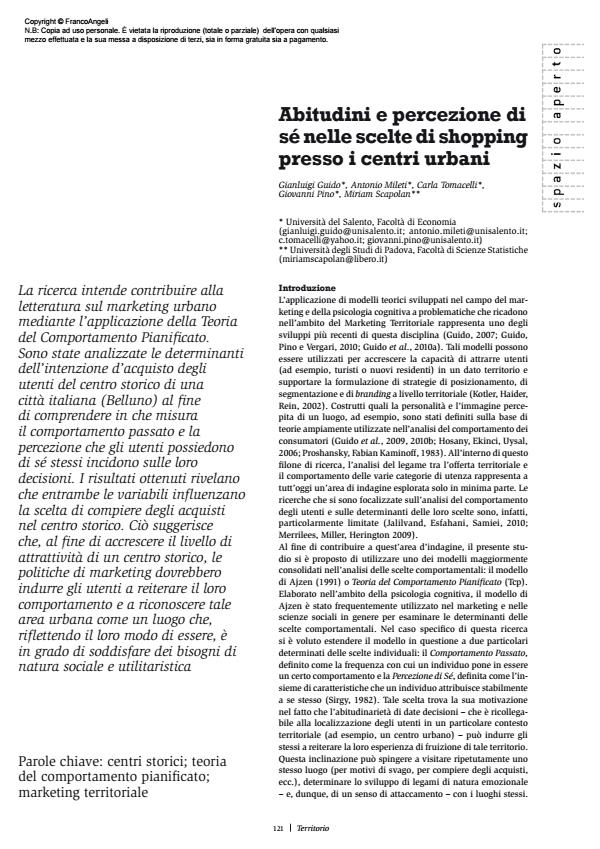Abitudini e percezione di sé nelle scelte di shopping presso i centri urbani
Titolo Rivista TERRITORIO
Autori/Curatori Gianluigi Guido, Antonio Mileti, Carla Tomacelli, Giovanni Pino, Miriam Scapolan
Anno di pubblicazione 2013 Fascicolo 2013/64
Lingua Italiano Numero pagine 10 P. 121-130 Dimensione file 313 KB
DOI 10.3280/TR2013-064021
Il DOI è il codice a barre della proprietà intellettuale: per saperne di più
clicca qui
Qui sotto puoi vedere in anteprima la prima pagina di questo articolo.
Se questo articolo ti interessa, lo puoi acquistare (e scaricare in formato pdf) seguendo le facili indicazioni per acquistare il download credit. Acquista Download Credits per scaricare questo Articolo in formato PDF

FrancoAngeli è membro della Publishers International Linking Association, Inc (PILA)associazione indipendente e non profit per facilitare (attraverso i servizi tecnologici implementati da CrossRef.org) l’accesso degli studiosi ai contenuti digitali nelle pubblicazioni professionali e scientifiche
The purpose of this research is to contribute to the literature on urban marketing through the application of the theory of planned behaviour. The determinants of intention to purchase in shoppers in the shopping centre of an Italian town (Belluno) were analysed to understand the extent to which the past behaviour and self-perceptions of shoppers affected their decisions. The results showed that both variables affected purchasing choices in the town centre. This suggests that in order to increase the attraction power of a town centre, marketing policies should induce shoppers to repeat their behaviour and to recognise the urban area as a place which, by reflecting their way of being, is able to satisfy their social and utilitarian needs.
Parole chiave:Town centres; theory of planned behaviour; urban and regional marketing
- L'effetto dell'inquinamento acustico sulla distanza percepita dei punti vendita Cristian Rizzo, Matteo Di Giuseppe, Domenico Moramarco, Simone Pizzi, Myriam Portaluri, Gianluigi Guido, in ESPERIENZE D'IMPRESA 1/2018 pp.65
DOI: 10.3280/EI2016-001004
Gianluigi Guido, Antonio Mileti, Carla Tomacelli, Giovanni Pino, Miriam Scapolan, Abitudini e percezione di sé nelle scelte di shopping presso i centri urbani in "TERRITORIO" 64/2013, pp 121-130, DOI: 10.3280/TR2013-064021